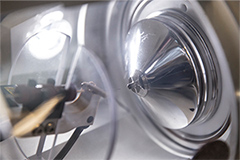News
FAPESP receives proposals for the second ERA.Net-LAC call Versão em português
 FAPESP and the network with research support agencies from the European Union, Latin America and the Caribbean will fund projects on biodiversity, climate change, bioeconomy, energy, health and ICT (photo: Leandro Negro / Agência FAPESP)
FAPESP and the network with research support agencies from the European Union, Latin America and the Caribbean will fund projects on biodiversity, climate change, bioeconomy, energy, health and ICT (photo: Leandro Negro / Agência FAPESP)
ERA.Net-LAC – a network formed by research support agencies from countries in the European Union, Latin America and the Caribbean with the aim of promoting joint activities to strengthen partnerships in Science, Technology and Innovation – launched its second transnational call for proposals in December 2015.
The call aims to support collaborative research projects on biodiversity, climate change, bioeconomy, energy, health and ICT, creating a long-term collaborations network with innovative, sustainable and multilateral character.
In order to foster the scientific collaboration between researchers from the State of São Paulo and from the European Union, Latin America and the Caribbean, FAPESP announces an opportunity for researchers affiliated to higher education and research institutions in the State of São Paulo to participate in the ERA.Net-LAC call for proposals 2016.
Besides the guidelines of the ERA.Net-LAC call, the researchers from the State of São Paulo must follow FAPESP’s rules related to submissions of Regular Projects.
The maximum duration of the projects may be up to 36 months, and the proposals must be submitted in English.
The total budget requested to FAPESP (including “Reserva Técnica” and eventual fellowships), should be less than € 50,000.00 per proposal for proposals with duration of 36 months. For proposals with lowest duration, the maximum requested value must be proportionally smaller.
The deadline for submission of proposals is March 10, 2016. The applicants from the State of São Paulo must also follow the timeline of the ERA.Net-LAC call.
More information about the call for proposals is available at: www.fapesp.br/en/9986.
